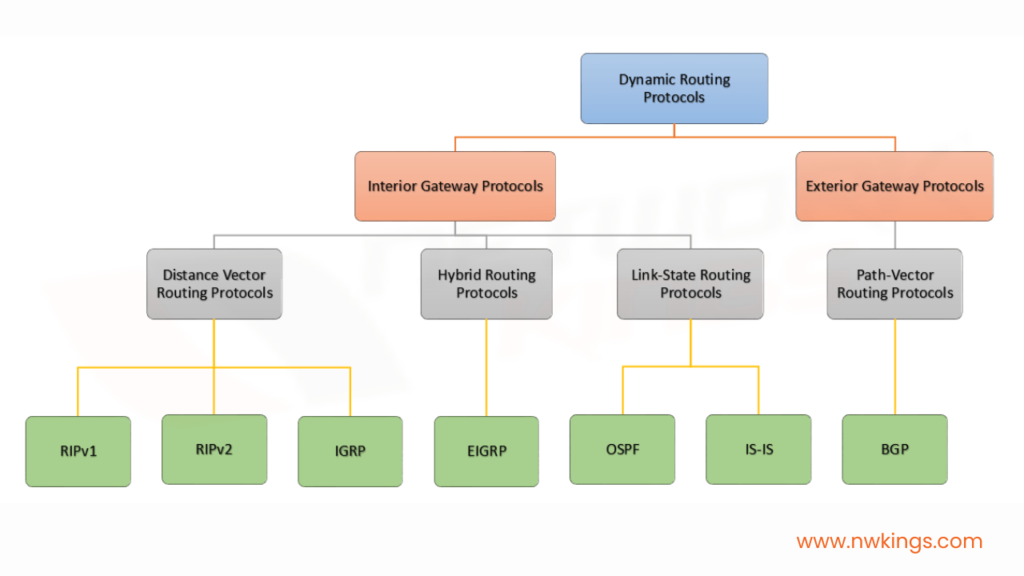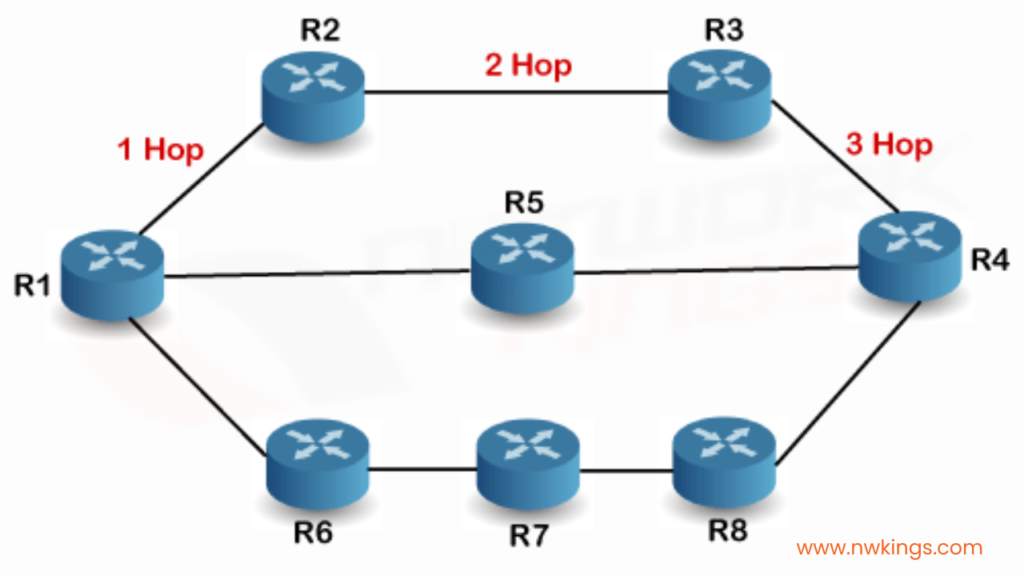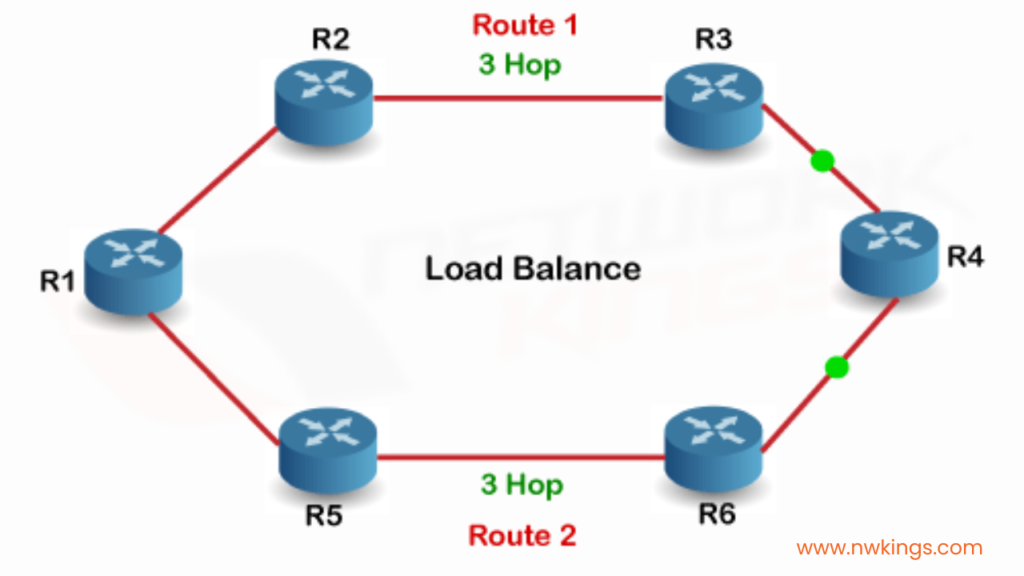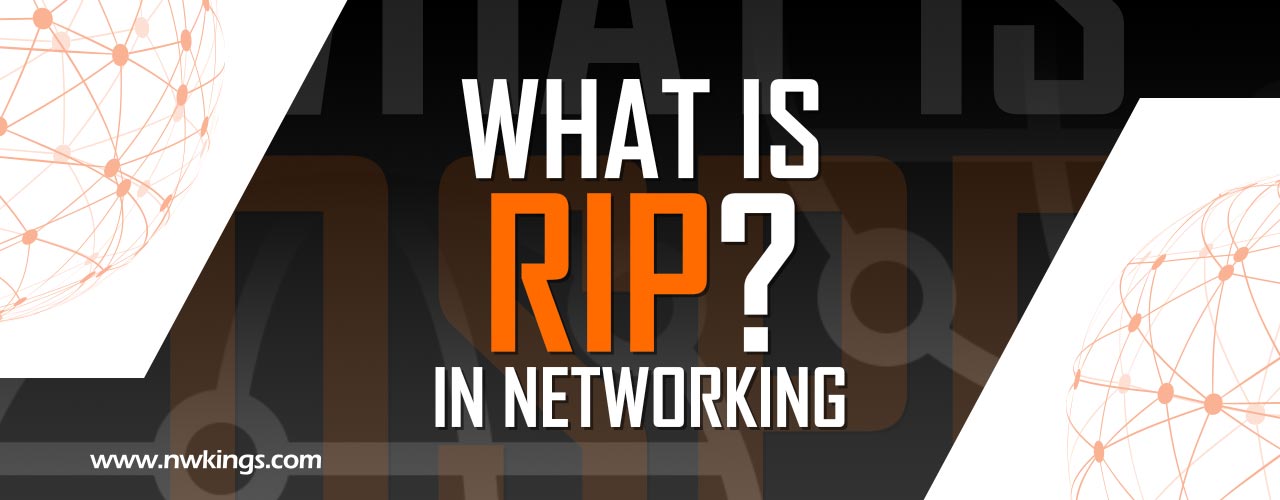
Since we are learning about the various networking protocols, it is time to learn about the RIP Protocol in Networking (Routing Information Protocol).
In the previous blog, we learned about the Open Shortest Path First (OSPF) protocol. I definitely recommend you go through that blog before jumping to this blog.
In this blog we are learning about the Routing Information Protocol (RIP) which is also an Interior Gateway Protocol (IGP), however, it is not a Link-State Protocol. It is a Distance-Vector Protocol.

We will learn in detail why it is called a distance vector routing protocol in the later part of this blog. So, we will cover what is Routing Information Protocol (RIP). Then we will learn how this protocol works and after that, we will learn about the advantages and disadvantages of the RIP protocol in Networking.
What is Meant By The Routing Information Protocol (RIP)?
- The Routing Information Protocol (RIP) is an open-standard protocol. It is not a Cisco proprietary protocol!
- It can be specified as a classful routing protocol.
- It is a distance-vector interior gateway protocol. Therefore it uses ‘routing-by-rumor’ logic to learn or share routes.
- This name is given so because the router does not know the network beyond its neighbors. It is only aware of the information that its neighbors tell the router about it.
- The distance vector protocols operate by sending the following to their neighbors that are connected directly:
- Their known destination networks.
- Their metric (distance/cost) to reach their known destination networks.
- Distance vector routing protocols are older than Link-State routing protocols.
- In the link-state routing protocols, the router develops a complete picture of the network.
- The RIP protocol is called a ‘distance vector’ because it is only aware of the distance (metric) and the direction/next-hop router (vector) of each route.
- One router = one hop. For example, a 10-gigabit connection is equal to one hop. So is the 10-megabit connection.
- The maximum hop count is 15. This means that RIP cannot be used for very large networks.
- The number of maximum routers is 16.
- The lower the metric, the better it is!
It exchanges the whole of the routing table after every 30 seconds.
What are the Different Versions of RIP in Networking?
There are three versions of the RIP in Networking. These are:
- RIPv1
- RIPv2
- RIPng (RIP Next Generation)
RIPv1:
- Version 1 of the RIP is a very old protocol.
- This version is not recommended to use while using the RIP.
- It only advertises classful addresses such as Class A, Class B and Class C.
- Therefore, it does not support VLSM and CIDR.
- When RIPv1 advertises a network to a neighbor, it does not even include subnet mask information in advertisements.
- It is suitable for IPv4.
- The messages of version 1 are broadcasted to the IP address 255.255.255.255.
- Since IPv4 address classes are no longer in use, they are replaced with CIDR and VLSM.
RIPv2:
- It is not classful like version 1.
- It supports both CIDR and VLSM.
- It includes subnet mask information in its route advertisements to support it.
- For example, a /30 network will be advertised as /30.
- It supports IPv4.
- The messages are multicast to the IP address 224.0.0.9.
Note: Broadcast messages are delivered to all the devices in a local network. On the other hand, multicast messages are only sent to those devices that have joined the specific multicast group.
RIPng:
- It is a next-generation RIP.
- It is used in IPv6.
How Does the RIP Work?
To understand how RIP works, we will consider two types of networks.
In the first example, there are eight routers connected to a network where router 1 wants to send data to router 3. If the network is configured with RIP, it will choose the route with the least hop count. In other words, it will choose the shortest path.

In this network, we have three possible routes to deliver the data from R1 to R4:
- Route 1:
It has 3 hop count. The data travels from R1 to R2 to R3 to R4.
- Route 2:
It has 2 hop count. The packet travels from R1 to R5 to R4.
- Route 3:
It has 4 hop count. The data travels from R1 to R6 to R7 to R8 to R4.
Therefore, the shortest path is router 2 as it has 2 hop counts only!
Let us consider another example!

In this example, router R1 wants to send information to router R4. If the network is configured with RIP, it will choose the route with the least hop count.
In this scenario, there are 2 possible pathways to send data from R1 to R4:
- Route 1:
It has a hop count of 3. The data travels from R1 to R2 to R3 to R4.
- Router 2:
It has a hop count of 3 as well. The data travels from R1 to R5 to R6 to R4.
In such a case when the hop count is the same for all of the routes, the router will send the packets through both route 1 and route 2 at the same time. In such a way, it manages the load balancing in the network. In such a way, the data will reach the destination faster.
What are the Advantages of the RIP Protocol in
Networking ?
The following are the advantages of the RIP in Networking:
- RIP is easy to configure.
- There is no complexity in this protocol.
- It uses less storage or CPU.
- It uses load balancing.
- It does not have any loops.
What are the Disadvantages of the RIP Protocol in Networking?
Here are a few disadvantages of the RIP in Networking:
- RIP only works on the basis of the hop count matrix. Therefore, if there is a better route available with more bandwidth, RIP does not choose that specific route.
- RIP always supports equal-cost load balancing.
- It broadcasts the updates to all of the network and therefore, it creates a lot of traffic.
- Bandwidth usage is very heavy as it broadcasts its update every 30 seconds.
- RIP only supports a maximum hop count of 15.
- It can only configure 16 routers.
- If any link goes down, RIP takes a long time to choose an alternate route. Therefore, it has slow convergence.
- RIP has the highest Administrative Distance of 120 which is not as reliable as other router protocols.
Bottom Line:
The Routing Information Protocol or RIP in CCNA is an interior-gateway distance vector routing protocol. To summarize, we have learned about the working of the RIP in Networking and we have also looked into the advantages and disadvantages of the RIP protocol in Networking.
In the upcoming blogs, we will understand EIGRP in detail.
Stay tuned for learning more protocols such as BGP, EIGRP in the CCNA series
Happy learning!


